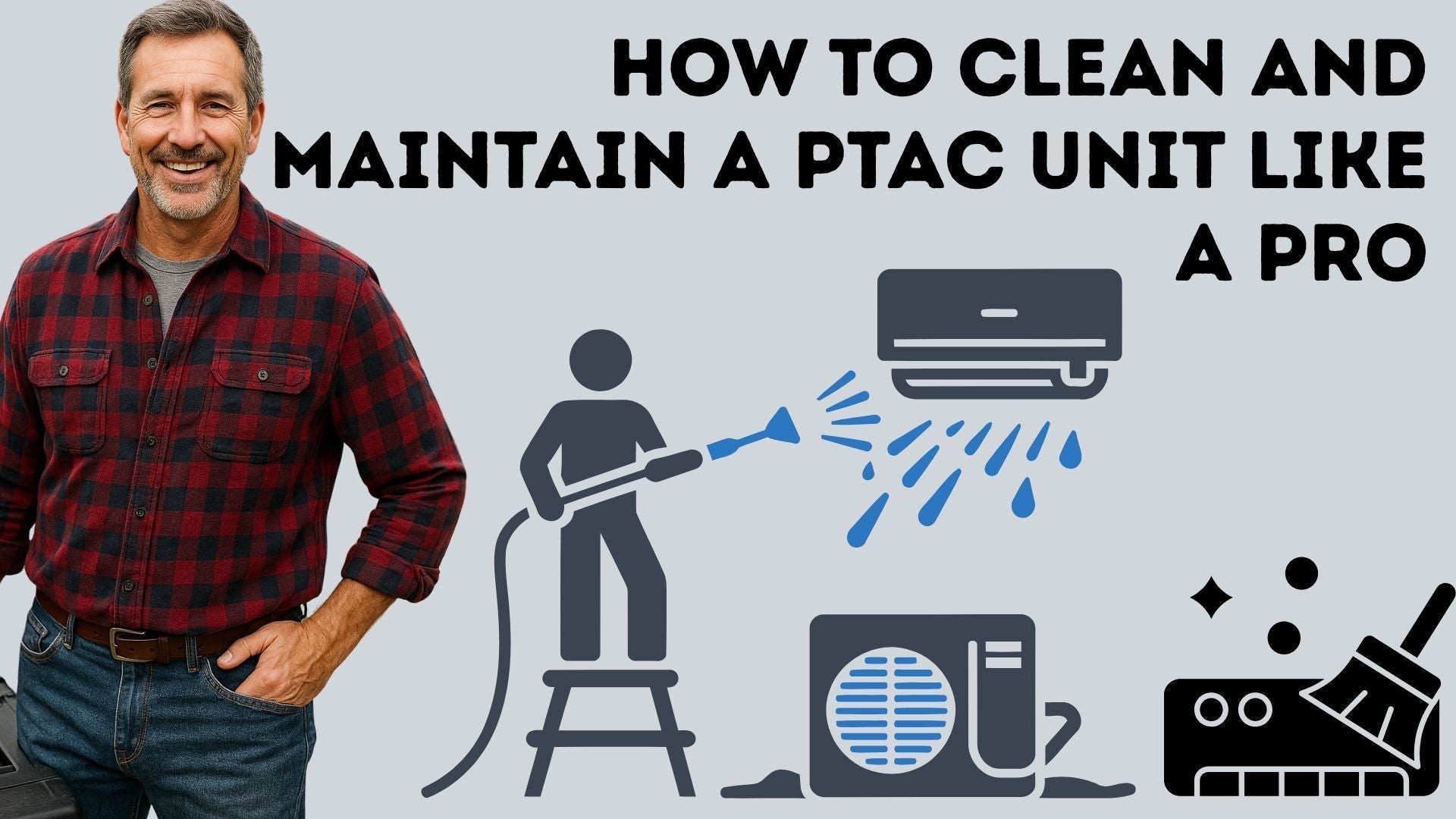Why PTAC Maintenance Matters
Look—I’ve been in HVAC a long time, and I’ll tell you straight: if you don’t stay on top of your PTAC unit maintenance, you’re gonna end up with:
-
Sky-high electric bills
-
Loud, clunky noise
-
Nasty smells
-
Premature breakdowns
And that’s no good if you’re running a hotel, multifamily complex, or assisted living facility where guest comfort matters.
Let’s walk through the PTAC cleaning and maintenance checklist I use for every property I work with.
Tools You’ll Need
-
Vacuum with hose and brush attachment
-
Soft brush or cloth
-
Coil cleaner spray (non-acidic)
-
Fin comb (optional)
-
Shop towel or microfiber cloth
-
Screwdriver
Step-by-Step PTAC Cleaning Guide
1. Turn Off the Power
Safety first. Unplug the unit or turn off the breaker. You’re working with an electric heater too—don’t risk it.
2. Clean the Air Filter
-
Open the front cover.
-
Remove the washable filter.
-
Vacuum off the dust, then wash it with warm, soapy water.
-
Let it dry completely before reinstalling.
👉 Pro Tip: Clean the filter once a month during peak season.
3. Vacuum the Front Coils
Use a vacuum hose with a soft brush to gently remove dust from the evaporator coils (the front set). Don’t bend the fins.
If they’re really grimy, hit them with a foaming coil cleaner made for indoor evaporators.
🔗 Energy.gov – Proper HVAC Maintenance
4. Inspect and Clean the Drain Pan
-
Check the condensate pan for standing water, mold, or algae.
-
Clean it out with a towel and disinfectant if needed.
Mold buildup is one of the top reasons PTACs start to stink.
5. Check the Back Coils and Exterior
Carefully pull the PTAC chassis from the wall sleeve (most models like the Amana Distinctions 14,700 BTU PTAC make this easy).
-
Vacuum and clean the condenser coils at the back.
-
Make sure the wall sleeve’s drain and weep holes are clear.
-
Clean off leaves, dirt, or anything blocking airflow outside.
🔗 Amana PTAC Owner’s Manual – Maintenance Instructions
6. Straighten the Coil Fins (If Needed)
If the aluminum fins are bent, use a fin comb to gently realign them. This helps restore proper airflow and efficiency.
7. Reinstall and Test
-
Slide the chassis back into the sleeve.
-
Plug it in.
-
Run the system in cooling and heating mode to ensure everything works.
When to Call a Pro
If your PTAC:
-
Trips breakers
-
Has a burnt smell
-
Is leaking inside the room
-
Doesn’t cool or heat properly
…it’s time to call a certified tech. You could be dealing with a faulty fan motor, refrigerant issue, or failed heating element.
🔗 ASHRAE Guide – PTAC Troubleshooting in Hospitality
Mike’s PTAC Maintenance Schedule
| Task | Frequency |
|---|---|
| Clean Filter | Monthly |
| Clean Coils | Every 3–6 Months |
| Inspect Drain | Every 3 Months |
| Deep Clean Chassis | Annually |
| Check Thermostat Settings | Seasonally |
Print it. Tape it to the wall. Your maintenance crew will thank you.
Final Tips from Mike
-
Don’t let dust and grime kill a perfectly good PTAC unit.
-
Maintenance takes 30 minutes and adds years to your system’s life.
-
Make it a habit—especially during cooling and heating season transitions.
Want a tough, reliable PTAC that’s easy to clean and built to last? The Amana Distinctions 14,700 BTU PTAC with 3.5kW heat is one I trust in hospitality installs every time.
In the next topic you will read: Best Thermostat Settings for PTAC Units in Different Seasons







